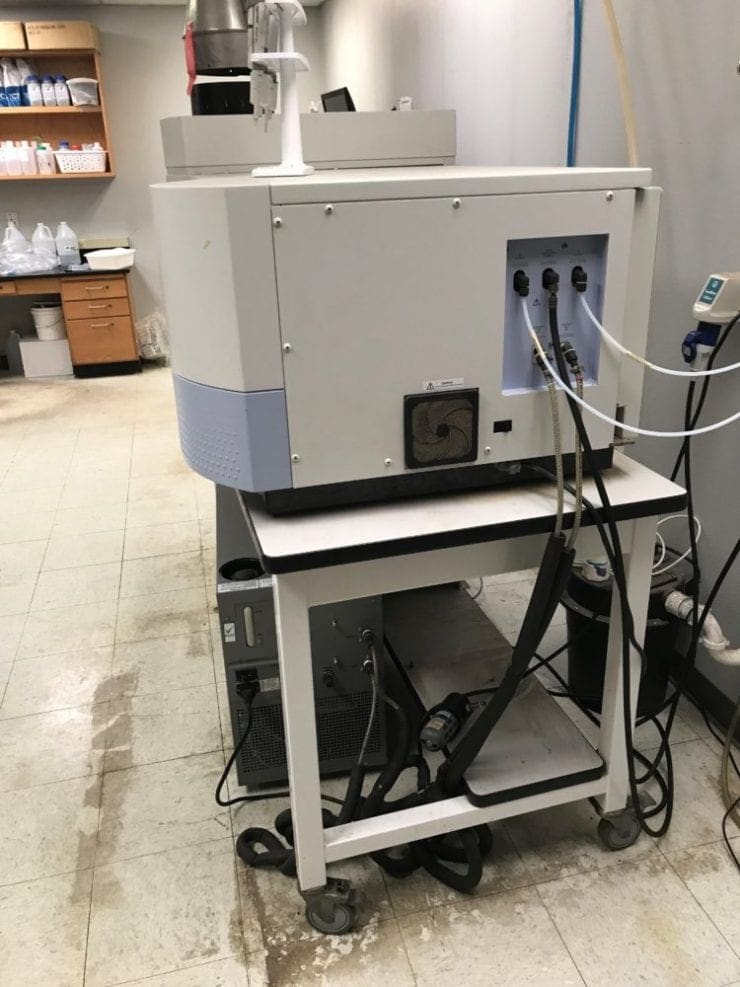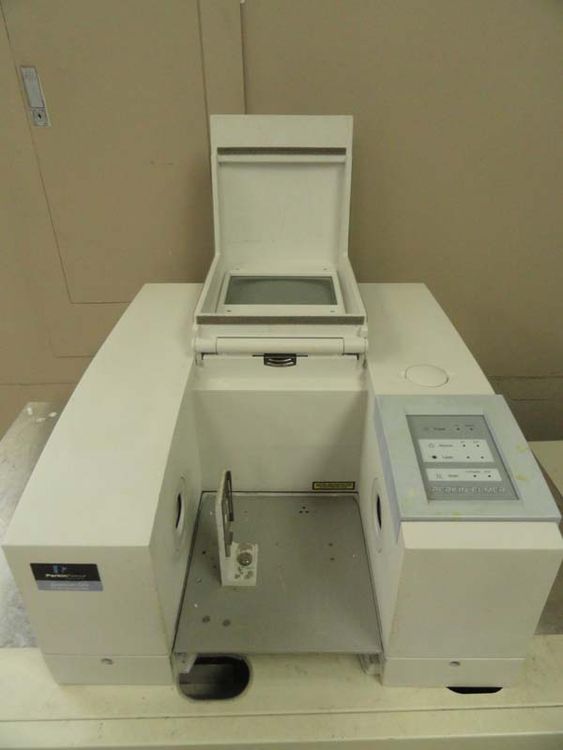

Germany had also done work in infrared spectroscopy, but had put it aside to concentrate on more urgent military needs, enabling Perkin-Elmer to build a substantial lead. However, the company was also able to arrange for research that extended its optical know-how into a brand new field, coming out with its initial infrared spectrometer in 1944. The principal wartime products were instruments and components used in airplane range finders, bombsights, and reconnaissance systems. In 1942, it became the first optical instrument maker to win a Navy "E" (for Excellence). The onset of World War II made clear the importance of an American source for precision instruments, and Perkin-Elmer was able to operate at a profit from the start. The company moved to Connecticut's Fairfield County in 1941-initially to Glenbrook outside Stamford, later to Norwalk and Wilton-its home area ever since. Perkin and Elmer started their optical design and consulting business in a small Manhattan office, but within a year they were producing optical components in Jersey City, New Jersey. They ordered equipment from Europe, and on Apthey formed Perkin-Elmer as a partnership. Deciding to set up shop in New York City, Perkin raised $15,000 in start up capital from his relatives, while Elmer was able to contribute in $5,000. They soon became friends and also recognized a common interest in turning their hobby into a business opportunity in precision optics. The two met when Perkin dropped in on an astronomy lecture Elmer delivered at the Brooklyn Institute of Arts & Sciences. Elmer, the head of a firm of court reporters who was already not far from retirement age, and Richard Perkin, a young investment banker who had left Pratt Institute in Brooklyn, New York, after a year of studying chemical engineering to try a Wall Street career. Perkin-Elmer originated in the early 1930s when a common fascination with astronomy brought together an otherwise unlikely duo: Charles W. The project team can be reached at any of the following:Īccess to the Citrix server or the Perkin-Elmer software.īug Reports: Please email a description of the problem, with a screenshot of any error messages.This system were manufacturerd by Perkin-Elmer of Norwalk, Connecticut and was commonly used for scientific and laboratory work. You can still copy-paste text or chemical structures regardless.īasically, old notebook pages may cause confusing errors if you try to mix them with new notebook pages. You will not be able to copy and paste entire reaction sections from old pages to new ones. If you use the Batch Explorer, to avoid problems you need to start a fresh notebook page to start a new batch or synthesis route.


If you use a notebook page template, you need to delete the reaction section from your template and create a new one. Some new features will not work with pages that predate the upgrade, though old pages will still be viewable and editable. The new system uses a new type of Reaction section for chemistry notebooks, and this has some important implications.
Perkin elmer software#
Information on installing and uninstalling the Citrix software can be found in the support files near the bottom of. If you have any trouble with launching the Citrix applications, the likely fix is to uninstall any old Citrix software from your computer. This is accomplished by adding a "store" to the Citrix Receiver application preferences, pointed to the server URL above. The Citrix Receiver application has some very nice features, including the ability to add the application icons to your desktop to avoid a layer of username/password entry.
Perkin elmer install#
The system uses a newer Citrix client (the “Citrix Receiver”). You will be prompted to install this software if it is not currently on your computer.
Perkin elmer password#
The username and password for the e-Notebook and Chemical Inventory are emailed to each individual user by Alexa Popillo from CCB facilities.ġ. The username and password required to log in to these applications are distinct from the username and password used to log into Citrix. Once logged in, you will see icons that will allow you to launch the e-Notebook and/or the Chemical Inventory (“ChemBioOffice Enterprise”). if your Harvard email address is then use randomperson as your username). *If the login fails while using your NetID as username, try using all of the characters that appear before the symbol of your Harvard email address as your username (e.g. Select “ ad.” from the domain drop down menu. ABC123 or ABC1234) that is obtained when signing up for a Harvard Key.*Įnter the password for you Harvard email account in the password field
Perkin elmer code#
The NetID is a 6-digit code comprised of three letters followed by three to four numbers (e.g.


 0 kommentar(er)
0 kommentar(er)
